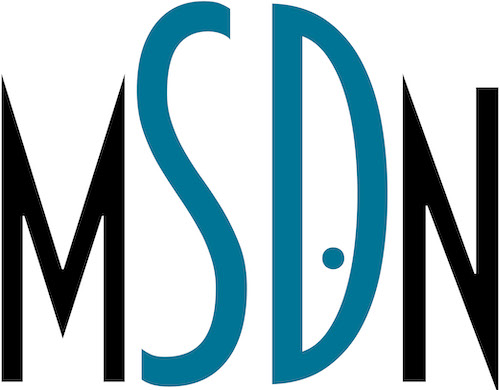On Tuesday, Sept. 11, 2001, I pulled into the parking lot at Maine South High School, my familiar morning stopping point for the past 30 years of my life. As I walked from my car to the building, I dawdled a bit to breathe in the fine clean air beneath the impossibly blue sky.
I don’t recall hearing any jets fly over, but I’m certain that they did, because this was Park Ridge, Illinois, a suburb in the shadow of O’Hare Field, the world’s busiest airport. There were always at least a dozen jets visible in the sky, any time of day or night. And you don’t take notice of things that are always there and always will be, do you?
We were a couple weeks into the new school year. Opening-day jitters had calmed, and the familiar routine was comforting.
It was my everyday world, a world that gave me deep satisfaction.
“What a perfect day,” I said out loud to nobody.
My first stop was my office, which was also the school newspaper office, where I was the adviser. I took a half-hour or so turning on computers and getting the newspaper office up and running, and then I went to the main office to pick up my mail and swung by the Xerox room to copy some lessons for the day—a typical school-day morning.
It was nearing 8 a.m. when I walked back to my newspaper office.
Inside was a boy named Dan, one of my editors, working at a computer. “Did you hear that a plane flew into one of the Trade Towers in New York?” he said.
Because Dan was a bit of a kidder, I looked at him sideways, waiting for some inappropriate punchline.
“No, really,” he said. “I’m not kidding.”
I had work to do in my office, but before my first class I took a detour and walked to the Audio-Visual office, where they would have a TV on to watch a story as big as this. On the way, I overheard stunned conversations in the hallway, all talking about the same thing. A plane. A skyscraper. Unbelievable.
But when I walked into the A-V room and saw a small group of teachers and secretaries clustered around the TV, on the screen was a much squatter building, billowing with smoke.
“Wait,” I said. “That’s the Pentagon. I heard it was one of the Trade Towers that got hit.”
“Yeah, that too,” somebody said. “And the other tower.”
And the room felt suddenly cold.
I couldn’t linger long to gather much of the story, because it was time for me to teach my Journalism class. All the TV’s had been spoken for, so I carried a radio to class, turned it on, and wrote on the blackboard, “Who, What, When, Where, Why”—the five building blocks of every news story.
The middle questions we filled in immediately, but two questions remained maddeningly empty.
Who?
Why?
We listened to reporters tell all they knew, but those last two questions were stubborn in revealing themselves.
“Of course,” I said to the class, “those questions won’t stay unanswered for long. Reporters will start filling in the blanks the same way you fill in blanks on a math test as time runs out. They’ll start guessing. And a lot of those guesses will be wrong.”
As if on cue, the radio speculation began and most of it was way off the mark. But of course we didn’t know it at the time.
After class, I returned to the newspaper office, where more of my editors had gathered to work on the paper during their free periods. It was a deadline day, and they didn’t know what to do.
“Should we even try to cover the story?” one girl asked. “I mean, we really don’t know anything, do we? Maybe we should wait and cover it next time, when we know more.” Next time was two weeks down the road.
“Well, let me ask you something,” I said. “You know that a newspaper is more than immediate news, right? It’s also a historical document, written as history unfolds itself. Journalists have written about Pearl Harbor for generations. But they only got one shot at telling the story live, bathed in grief, confusion, and worry as it was happening, with Japanese planes still circling in the air. Which would you rather read?”
We worked together on and off through the school day, and after classes were over we met for hours to finish things up. By now it was 12 hours after I had pulled into the parking lot under the fine, blue sky, and I was exhausted. I muttered out loud to nobody, “The world I woke up to this morning is gone, and I’ve not yet gone to sleep in the new world.”
“Can I use that?” Dan said. He had been sitting next to me, trying to come up with a quote to tuck into a story he had been struggling with.
I nodded.
Evening fell. With the issue finally put to bed, the students straggled home. My stress-weary bones ached. As I walked out to my car in the parking lot just after sunset, I paused to gaze up into the sky fading from red to black.
Silence.
I was standing in a parking lot in the shadow of the busiest airport in the world, and the sky was silent because every plane at the airport—every plane in the nation—had been grounded.
And being a kid who had grown up in O’Hare’s shadow, I realized that for the first time in my life I could look up into a sky that didn’t have at least one airplane in it. Every American was bound to the ground as never before since Kitty Hawk. We had been blown back to the past—and at the same time blasted into the future.
I took the long drive home.
I fell into bed.
I woke up Wednesday morning in a different world.




